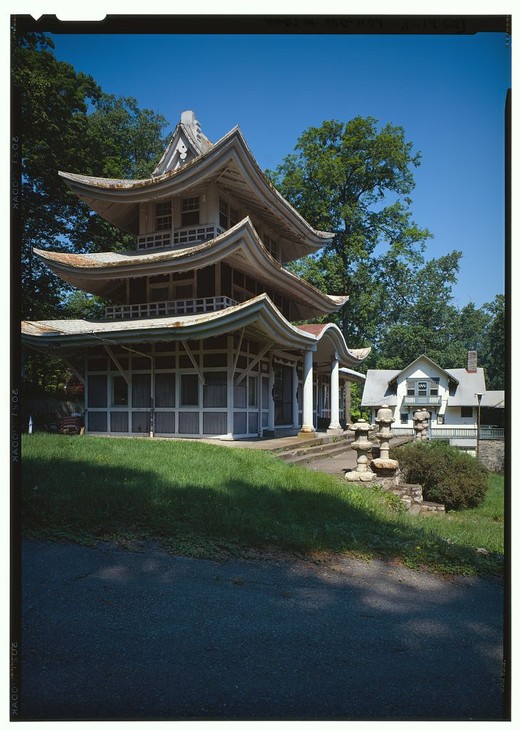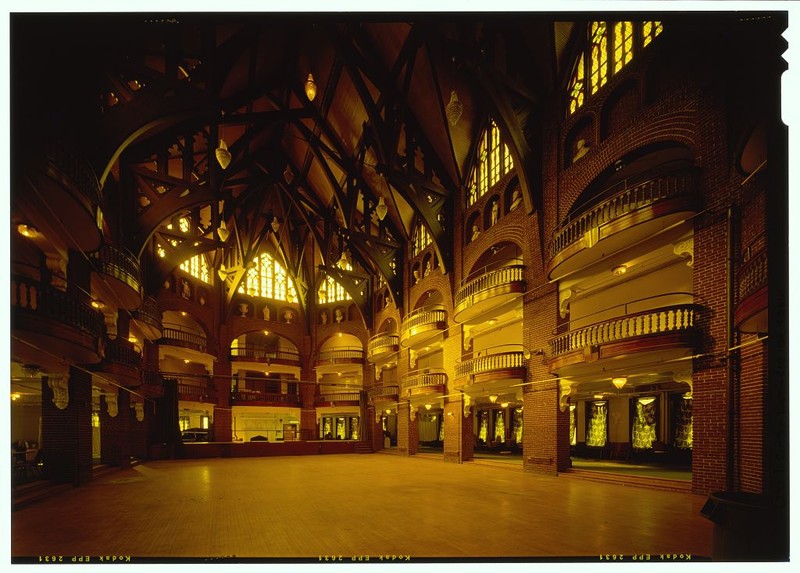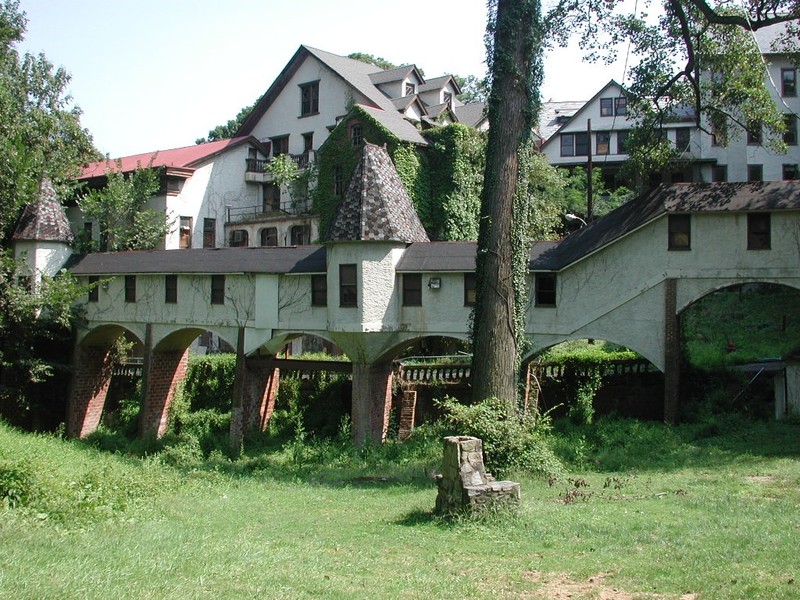National Park Seminary
Introduction
Text-to-speech Audio
Images
Pagoda at National Park Seminaryna, HABS, Library of Congress (public domain)

Ballroom at National Park Seminary, HABS, Library of Congress (public domain)

Photograph by Jennifer Falkinburg, 2003 (reproduced under Fair Use)

Backstory and Context
Text-to-speech Audio
Before development into a resort, this land was a forest and a tobacco plantation. In 1887, T. F. Schneider designed Ye Forest Inne. The resort was unsuccessful; in 1894, John and Vesta Cassedy rented and then acquired the property to build a finishing school for upper-class girls. The Chicago World's Fair inspired the architecture of the buildings, which echoed a variety of styles -- a Swiss chalet and a pagoda, for example.Dr. James E. Ament took over the school in 1916 and expanded the campus.
The school's heyday lasted the first few decades of the twentieth century, with students from such wealthy families as the Maytags, Krafts, Hersheys, and Chryslers. Dr. Roy Tasco purchased the school in 1937, introducing a business curriculum and renaming it National Park College. The War Powers Act compelled the sale of the school to the Army during World War II. The Army used the campus as an annex to Walter Reed Hospital and housed amputees there. The Army continued to treat wounded soldiers there during the Korean and Vietnam wars, until 1978. Additionally, the campus was a site of animal research.
During its occupancy of the campus, the Army tore down some of the buildings and removed or painted over some of the interior details. The Maryland Historic Trust succeeded in placing the National Park Seminary Historic District on the National Register of Historic Places in 1972. The Save Our Seminary association prevented the Army from tearing down the campus, but arson destroyed one building in 1993. A decade later, a developer stepped in to convert the buildings into private homes. Visitors can go on a self-guided walking tour of the campus, though not into the buildings. The Save Our Seminary association also gives monthly tours that include some interiors.
Sources
Allison. National Park Seminary, Atlas Obscura. Accessed April 21st 2020. https://www.atlasobscura.com/places/national-park-seminary.
Miller, Nancy. National Park Seminary Historic District, National Register of Historic Places Nomination Form. July 10th 1972. Accessed April 23rd 2020. https://mht.maryland.gov/secure/medusa/PDF/NR_PDFs/NR-93.pdf.
Save Our Seminary. Overview, Save Our Seminary at Forest Glen: History. Accessed April 21st 2020. http://www.saveourseminary.org/national-park-seminary/overview/.
https://www.loc.gov/pictures/item/md1513.color.218454c/
https://www.loc.gov/pictures/item/md1509.color.218450c/
https://mht.maryland.gov/nr/NRDetail.aspx?NRID=95
